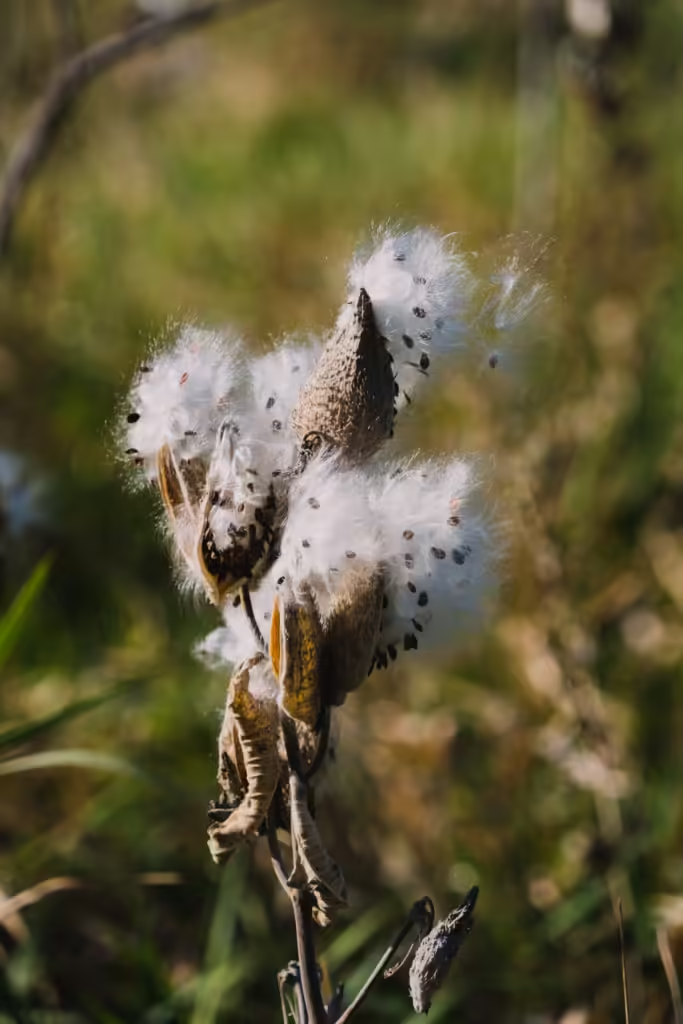
Saving milkweed seeds benefits your garden and plays a vital role in supporting monarch butterfly populations. Monarchs rely on milkweed as their primary food source and habitat, especially for laying eggs and feeding caterpillars. By collecting and planting milkweed seeds, you contribute to preserving monarch populations and provide a thriving environment for other beneficial pollinators.
Planting milkweed from saved seeds lets you expand your garden in a sustainable way. With a few simple steps, you can harvest, dry, and store milkweed seeds to plant next season. This process ensures you’re ready to start new plants and play a direct role in sustaining monarchs and promoting biodiversity.
Why Save Milkweed Seeds for Monarchs?
Milkweed is a crucial plant for monarch butterflies, serving as the only host plant for monarch caterpillars. With natural habitats under threat from urbanization, agriculture, and climate change, monarch populations have declined significantly in recent years. Saving and planting milkweed seeds can help reverse this trend by increasing the availability of milkweed in gardens, parks, and natural spaces, providing monarchs with the resources they need to survive and thrive.
Growing milkweed from saved seeds also offers you the chance to contribute to a sustainable ecosystem. Milkweed attracts other pollinators, such as bees and beneficial insects, making it a valuable addition to any pollinator-friendly garden. Additionally, milkweed has deep roots that improve soil quality and can even help control erosion, making it a plant with both environmental and aesthetic benefits.
Harvesting Milkweed Seeds for Optimal Growth
To save milkweed seeds for next year, begin by choosing healthy, mature plants. Milkweed seeds develop inside pod-like structures that grow along the plant’s stem. These pods hold the seeds until they are ready to disperse naturally. As the pods mature, they turn brown, split open, and release seeds attached to silky fibers that help them float in the wind. This natural dispersal mechanism ensures that milkweed spreads efficiently, but if you want to save seeds, you’ll need to collect them before they disperse.
When you notice the pods turning brown and beginning to open, it’s the ideal time to harvest the seeds. To collect them, gently remove the pod from the plant, taking care to gather pods that are fully mature. Immature pods may not have fully developed seeds, so avoid any that are still green. A mature seed is typically brown, firm, and easily separated from the silky fibers, while immature seeds are lighter in color and may not germinate well. Harvesting at the right time ensures your saved seeds have the best chance of successful growth when planted next year.
Preparing Milkweed Seeds for Drying
Drying your milkweed seeds is an essential step to ensure they remain viable for planting. After harvesting, spread the seeds out in a well-ventilated area to dry. A tray, paper towel, or mesh screen makes an excellent drying surface, allowing air to circulate around the seeds. Keep the drying seeds in a warm, dry place out of direct sunlight, as too much heat can damage the seeds.
Drying is important because any moisture left in the seeds can lead to mold growth, which can damage or destroy the seeds. Typically, it takes a few days for milkweed seeds to dry completely. You’ll know they’re ready when they feel firm and dry to the touch, with no signs of moisture. Properly dried seeds are less likely to rot or deteriorate during storage, giving you high-quality seeds to plant when the time is right.
Storing Milkweed Seeds
Once your milkweed seeds are thoroughly dried, it’s time to store them. Seed envelopes are a practical choice for storing milkweed seeds, as they protect the seeds from light and allow for a small amount of airflow, which is important for long-term viability. Paper envelopes, which are commonly used in gardening, are a budget-friendly and effective storage option. Place your dried seeds inside the envelope, and be sure to label it with the plant type and the date of collection. Proper labeling helps you keep track of your seed collection and ensures you know exactly when you harvested the seeds.
After placing your milkweed seeds in envelopes, storing them in an airtight container provides added protection from moisture and pests. Airtight containers, such as glass jars or metal containers with a secure lid, create a controlled environment that minimizes the risks posed by humidity and temperature fluctuations. By keeping your seeds in an airtight container, you’re giving them a stable environment where they can stay dormant until planting season.
Adding a silica packet to your airtight container provides an extra layer of moisture control, helping keep your milkweed seeds in top condition for planting. Silica packets absorb excess humidity, creating an environment with low moisture levels ideal for long-term seed storage. This step is especially helpful if you’re storing seeds for several months, as it keeps them dry and reduces the risk of mold growth or premature germination.
Happy Seed Saving!
Saving milkweed seeds is a rewarding way to promote biodiversity, support monarch populations, and enrich your garden. When you take time to save and plant milkweed seeds, you’re contributing to monarch conservation and creating a welcoming habitat for various pollinators. This simple act of seed-saving allows you to connect with nature, foster a sustainable gardening practice, and make a positive impact on local ecosystems. As you enjoy the results of your efforts, you’ll witness firsthand the beauty of a garden filled with butterflies and other beneficial insects, knowing you played a role in preserving these vital creatures for generations to come.
Please be sure to check out my Gardening Blog Post Page for more tips on all types of gardening. Including Seed Saving, Seed Starting, Orchids, Water Gardening, Coldframe Gardening, Indoor Bulb Gardening, Hydroponics, Container Gardening, Mums, Herbs, African Violets, planting Bulbs, Flower Gardening, Vegetable and Fruit Gardening, Indoor Houseplants of all kinds, Cactus, Succulents, Hanging plants, Deer resistant plants and even Bird, Bee, Butterfly and Hummingbird Gardens!
